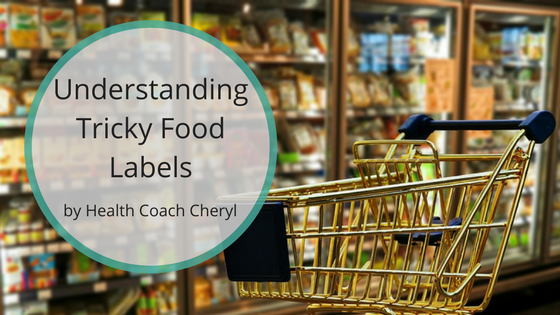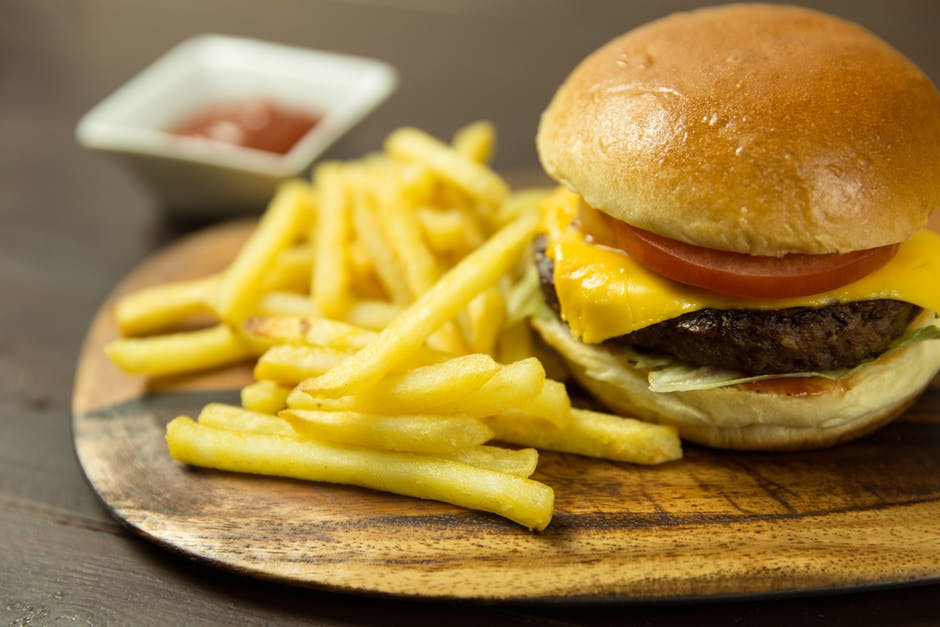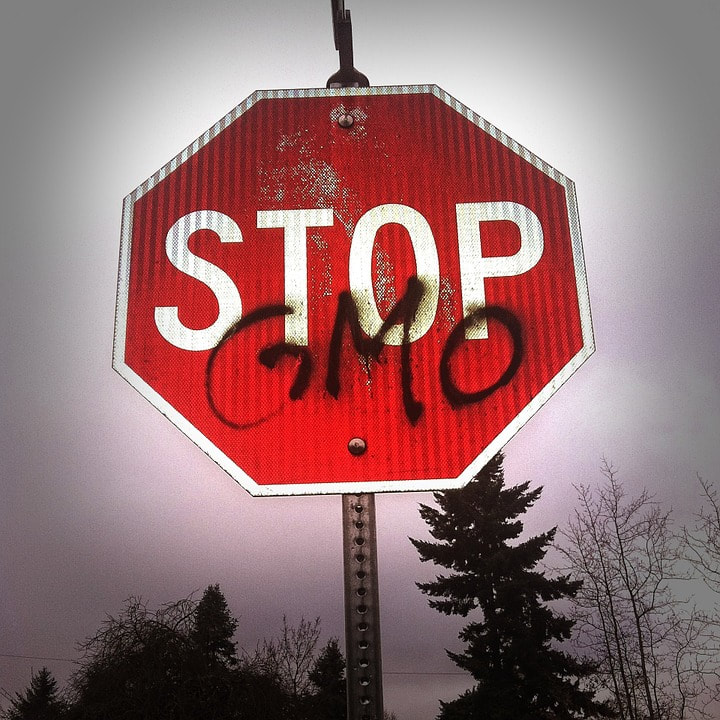“Modern food manufacturers have overwhelmed store shelves with foods that are nutrient poor, rotten, spoiled, dead, old, and contaminated with antibiotics, chemicals, and growth hormones. Refining has also brought us spectacularly cheap, pervasive, and fattening ingredients: namely white flour, white sugar, high fructose corn syrup, and industrial seed oils. These fake foods distort your appetite and cause you to consume more calories than you require. This perpetuates a vicious cycle of stuffing your face but never feeling totally satisfied or nourished.” - Abel James – Author “The Wild Diet”
Learning to Understand Food Labels
Have you ever looked at the list of ingredients on a food package and realized you had no idea what they were? Food labels usually read more like a list from a science experiment than a list of ingredients we actually recognize.
In case you missed it, in an earlier blog post I talked all about How to Read the New Nutrition Facts Table.
Here is a list of top offenders and controversial ingredients. Watch for these and avoid them!
In case you missed it, in an earlier blog post I talked all about How to Read the New Nutrition Facts Table.
Here is a list of top offenders and controversial ingredients. Watch for these and avoid them!
High Fructose Corn Syrup
We've all heard of High Fructose Corn Syrup. It has been shown to damage immune function, speed up the aging process, and contribute to weight gain. Found in everything from crackers to bread, chips, yogurt and sauces. I’m amazed at how many products contain High Fructose Corn Syrup!
Refined Sugar
We came across a staggering post that people in the US consume 130 to 160 pounds of sugar per year. In other words, we are consuming half a cup of sugar a day and most of us aren’t even aware of it.
High consumption of sugar and the corresponding elevated insulin levels can cause weight gain, bloating, fatigue, arthritis, migraines, lowered immune function, obesity, cavities and cardiovascular disease. It can also disrupt absorption of nutrients, possibly leading to osteoporosis, depression, PMS symptoms and stress.
High consumption of sugar and the corresponding elevated insulin levels can cause weight gain, bloating, fatigue, arthritis, migraines, lowered immune function, obesity, cavities and cardiovascular disease. It can also disrupt absorption of nutrients, possibly leading to osteoporosis, depression, PMS symptoms and stress.
Trans Fat
Trans fats are found in hydrogenated oil or partially hydrogenated oil. According to the Harvard School of Public Health, trans fats cause about 50 thousand premature heart attack deaths per year!
Trans fats also increase the risk for cancer, obesity, depression, asthma, osteoporosis and more. Trans fats are found in cookies, cakes, frozen food, crackers, chips, etc. It looks like the U.S. government is finally taking steps to eliminate the use of trans fats in our food supply, so this is a step in the right direction.
Trans fats also increase the risk for cancer, obesity, depression, asthma, osteoporosis and more. Trans fats are found in cookies, cakes, frozen food, crackers, chips, etc. It looks like the U.S. government is finally taking steps to eliminate the use of trans fats in our food supply, so this is a step in the right direction.
MSG
MSG stands for monosodium glutamate. You’d be very surprised to know where this substance lurks.
It’s usually disguised under other names like: yeast extract, autolyzed yeast extract, hydrolyzed vegetable protein, carrageenan, sodium caseinate, soy protein and a few others, including ‘natural flavorings’ (natural flavoring doesn’t always mean MSG, but oftentimes it does).
It’s very common to find MSG in soups, sauces, crackers, flavored chips etc.
It’s usually disguised under other names like: yeast extract, autolyzed yeast extract, hydrolyzed vegetable protein, carrageenan, sodium caseinate, soy protein and a few others, including ‘natural flavorings’ (natural flavoring doesn’t always mean MSG, but oftentimes it does).
It’s very common to find MSG in soups, sauces, crackers, flavored chips etc.
“Not only does hydrolyzed vegetable protein (one of the names MSG is disguised as) contain three very powerful brain cell toxins – glutamate, aspartate and cysteic acid – but it also contains several known carcinogens. Incredibly, the FDA does not regulate the amount of carcinogens allowed in hydrolyzed vegetable protein or the amount of hydrolyzed vegetable protein that’s allowed to be added to food products. This substance poses an even greater danger than MSG itself.” -Russell Blaylock, M.D. author – ‘Excitotoxins, the Taste that Kills’
Sulfites/Sulfates
Another known culprit is Sulfites. They destroy vitamin B1, which is important for mental clarity and heart health. They are commonly found in processed lunch meats as well as beer and wine. Look for lunch meat such as Applegate Farms Organics that don’t contain sulfites, artificial flavors and colors.
According to, "Food Dyes: A Rainbow of Risks," The Center for Science in the Public Interest (CSPI) revealed that nine of the food dyes currently approved for use in the United States are linked to health issues ranging from cancer and hyperactivity to allergy-like reactions -- and these results were from studies conducted by the chemical industry itself.
These are in many products including Gatorade, sodas, frozen treats, flavored chips, fruit snacks, candy, etc.
According to, "Food Dyes: A Rainbow of Risks," The Center for Science in the Public Interest (CSPI) revealed that nine of the food dyes currently approved for use in the United States are linked to health issues ranging from cancer and hyperactivity to allergy-like reactions -- and these results were from studies conducted by the chemical industry itself.
These are in many products including Gatorade, sodas, frozen treats, flavored chips, fruit snacks, candy, etc.
Artificial Sweeteners
Did you know that artificial sweeteners can decrease your good gut bacteria by as much as 50%. Artificial sweeteners have also been found to spike insulin and leptin levels. This can cause weight gain even though you are drinking a zero calorie drink!
Leptin is a hormone that tells your body it’s full. When this hormone is over-stimulated, your body does not get the message as early that you are satiated, leading to consuming more food that you normally would.
Leptin is a hormone that tells your body it’s full. When this hormone is over-stimulated, your body does not get the message as early that you are satiated, leading to consuming more food that you normally would.
“The sweetness tells your brain that calories and micronutrients are coming in; however, when they don’t arrive, your body shouts our for nutrients and sends you on a quest to find more.” - Jayson and Mira Calton, Rich Food, Poor Food
BHA and BHT
Butylated Hydroxyanisole (BHA) and Butylated Hydroxytoluene “BHA and BHT are two food additives commonly used in the food industry to prevent oils from going rancid. Studies have shown that BHA has caused stomach-focused carcinogens in trials involving mice, hamsters and rats.
The US Department of Health and Human Services has deemed BHA "reasonably anticipated to be a human carcinogen." BHT is slightly less harmful than BHA, but should still be replaced with safer alternatives.
The US Department of Health and Human Services has deemed BHA "reasonably anticipated to be a human carcinogen." BHT is slightly less harmful than BHA, but should still be replaced with safer alternatives.
Genetically Modified Organisms (GMOs)
GMOs are plants or animals that have had their DNA modified. In the US, the majority of the corn, wheat, soybean, cotton and canola crops are now genetically modified, and one or more of these can be found in nearly every processed food.
GMOs have not been proven safe and some studies show GMOs may decrease immunity to diseases in plants as well as humans. They may also cause resistance to antibiotics and could have a negative impact on genetic function.
For a current list of GMO foods, you can visit The Environmental Working group (EWG) at www.ewg.org.
GMOs have not been proven safe and some studies show GMOs may decrease immunity to diseases in plants as well as humans. They may also cause resistance to antibiotics and could have a negative impact on genetic function.
For a current list of GMO foods, you can visit The Environmental Working group (EWG) at www.ewg.org.
The more whole, unprocessed food we eat, the less time we need to spend reading labels!
When grocery shopping, it is always best to spend most of your time on the perimeter of the store.
This is where you will find fresh fruits and vegetables, meats, eggs, etc. The canned and processed foods are usually in the middle isles.
On a previous blog post, we discussed How to Reduce Your Toxic Load, which is filled some great information about how to audit your life to remove unnecessary chemicals from things you maybe didn't even realize were toxic for you and your family.
When grocery shopping, it is always best to spend most of your time on the perimeter of the store.
This is where you will find fresh fruits and vegetables, meats, eggs, etc. The canned and processed foods are usually in the middle isles.
On a previous blog post, we discussed How to Reduce Your Toxic Load, which is filled some great information about how to audit your life to remove unnecessary chemicals from things you maybe didn't even realize were toxic for you and your family.
Don't Let it get Overwhelming
| Rather than feel overwhelmed with all this information - we need to become more aware. You can start with something as simple as reading food labels at the store. Maybe work on one meal at a time and implement more whole foods during the day. Decide what you want to start with first. You don’t have to do it all at once. You can just start with one thing and once that’s in place, move on to the next thing. Want to find out more? I am just a phone call away. I can help answer your questions regarding food labels and give you the tools to help you on your health journey. |




